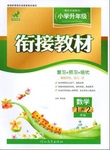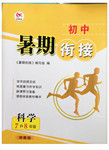题目内容
It even leaves the wise scientists in wonder____ they should call the newly-born creature, which looks half-human and half-animal.
A. what????????? B. how?????????????? C. why???????????? D. that
A
【解析】
试题分析:考查名词性从句。wonder在此是名词,后跟同位语从句,对其进行补充说明;call sb sth叫/称呼......为......,即call后跟双宾语,同位语从句缺少宾语,用what充当,B、C作状语,that在名词性从句中无意义,故选A。
考点:考查名词性从句

 鹰派教辅衔接教材河北教育出版社系列答案
鹰派教辅衔接教材河北教育出版社系列答案 初中暑期衔接系列答案
初中暑期衔接系列答案Coffee has a history dating back to at least the 9th century and has been a catalyst for social interaction across cultures and eras. Originally discovered in Ethiopia, coffee beans were brought into the Middle East by Arab traders, spreading to Egypt, Yemen, Persia, Turkey, and North Africa by the 15th century. Muslim merchants eventually brought the beans to the thriving port city of Venice, where they sold them to wealthy Italian buyers. Soon, the Dutch began importing and growing coffee in places like Java and Ceylon (largely through slave labor), and the British East India Trading Company was popularizing the beverage in England. Coffee spread across Europe and even reached America.
Where there has been coffee, there has been the coffeehouse. From the 15th century Middle Eastern establishments where men gathered to listen to music, play chess, and hear recitations from works of literature, to Paris' Cafe le Procope where luminaries of the French Enlightenment such as Voltaire, Rousseau, and Diderot came to enjoy a hot cup of joe, coffeehouses have traditionally served as centers of social interaction, places where people can come to relax, chat, and exchange ideas.
The modern coffee shop is modeled on the espresso and pastry-centered Italian coffeehouses that arose with the establishment of Italian-American immigrant communities in major US cities such as New York City's Little Italy and Greenwich Village, Boston's North End, and San Francisco's North Beach. New York coffee shops were often frequented by the Beats in the 1950's. It wasn't long before Seattle and other parts of the Pacific Northwest were developing coffee shops as part of a thriving counterculture scene. The Seattle-based Starbucks took this model and brought it into mainstream culture.
Although coffeehouses today continue to serve their traditional purpose as lively social hubs in many communities, they have noticeably adapted to the times. Rediscovering their purpose as centers of information exchange and communication, many coffee shops now provide their customers with internet access and newspapers. It has become extremely common to see someone sitting at a Starbucks listening to music or surfing the web on his or her laptop. Coffee stores today also maintain a fairly identifiable, yet unique aesthetic: wooden furniture and plush couches, paintings and murals drawn on walls, and soft-lighting combine to give coffee shops the cozy feeling of a home away from home.
Today, big business retail coffee shops are expanding quickly all over the world. Starbucks alone has stores in over 40 countries and plans to add more. Despite its popularity, Starbucks has been criticized and labeled by many as a blood-sucking corporate machine, driving smaller coffee shops out of business through unfair practices. This has even spawned an anti-corporate coffee counterculture, with those subscribing to this culture boycotting big business coffee chains. Increasingly popular coffee stores such as The Coffee Bean and Tea Leaf are also giving Starbucks some stiff competition. In any case, it seems pretty clear that coffee has weaved itself into the fabric of our consumer-oriented culture.
【小题1】 Which of the following is the correct order of coffee spreading in history?
①Egypt ②America ③the Middle East ④Netherlands ⑤Venice
| A.①③④②⑤ | B.③①⑤④② | C.①⑤④③② | D.③②⑤④① |
| A.Starbucks has beaten all the competitors |
| B.there are no changes in the development of coffee culture |
| C.the taste of coffee has changed a lot |
| D.Starbucks has some effect on the development of coffee culture |
| A.Seattle | B.Ethiopia | C.Java | D.France |
| A.play chess with other customers |
| B.enjoy delicious dishes from South America |
| C.surf the internet |
| D.watch a TV play |



